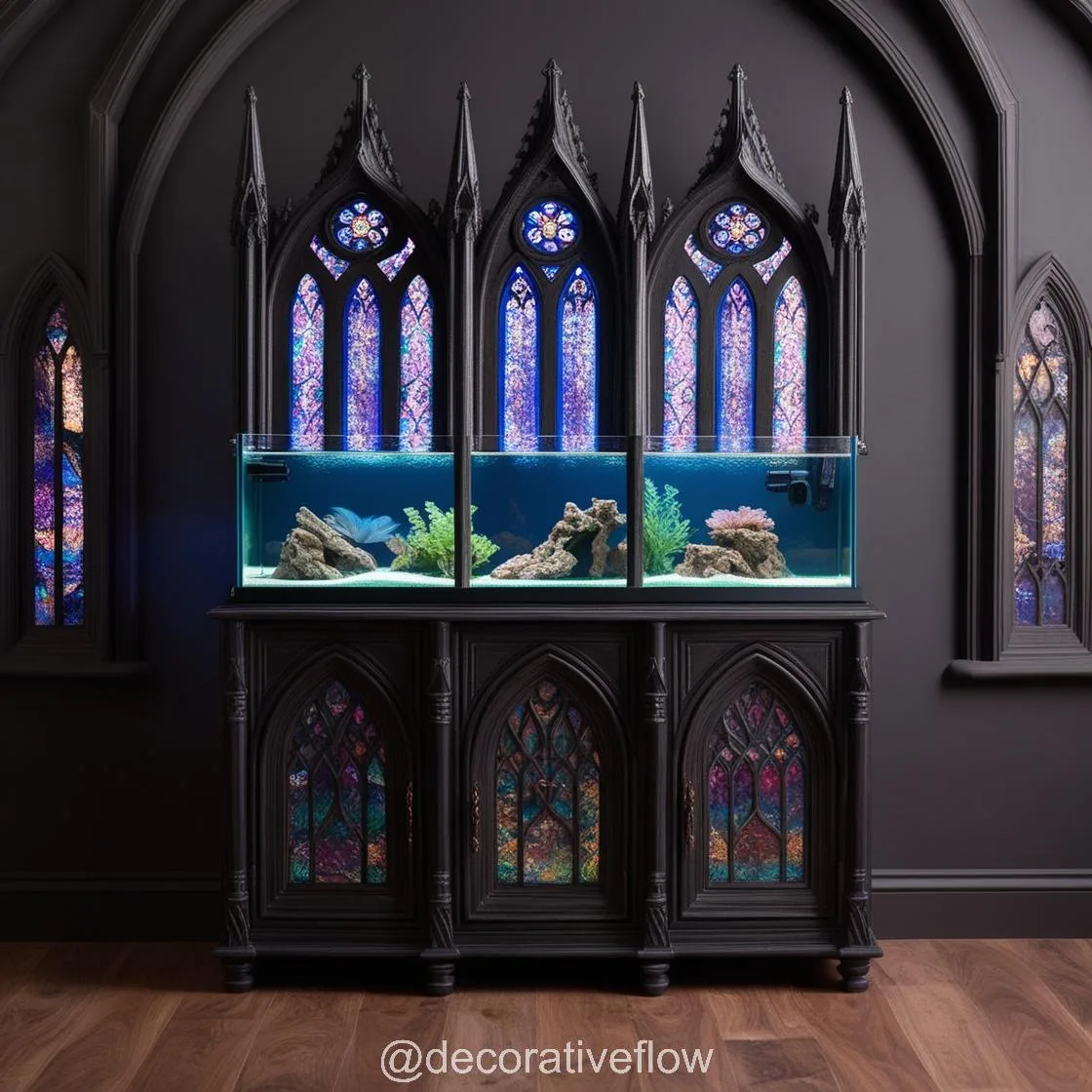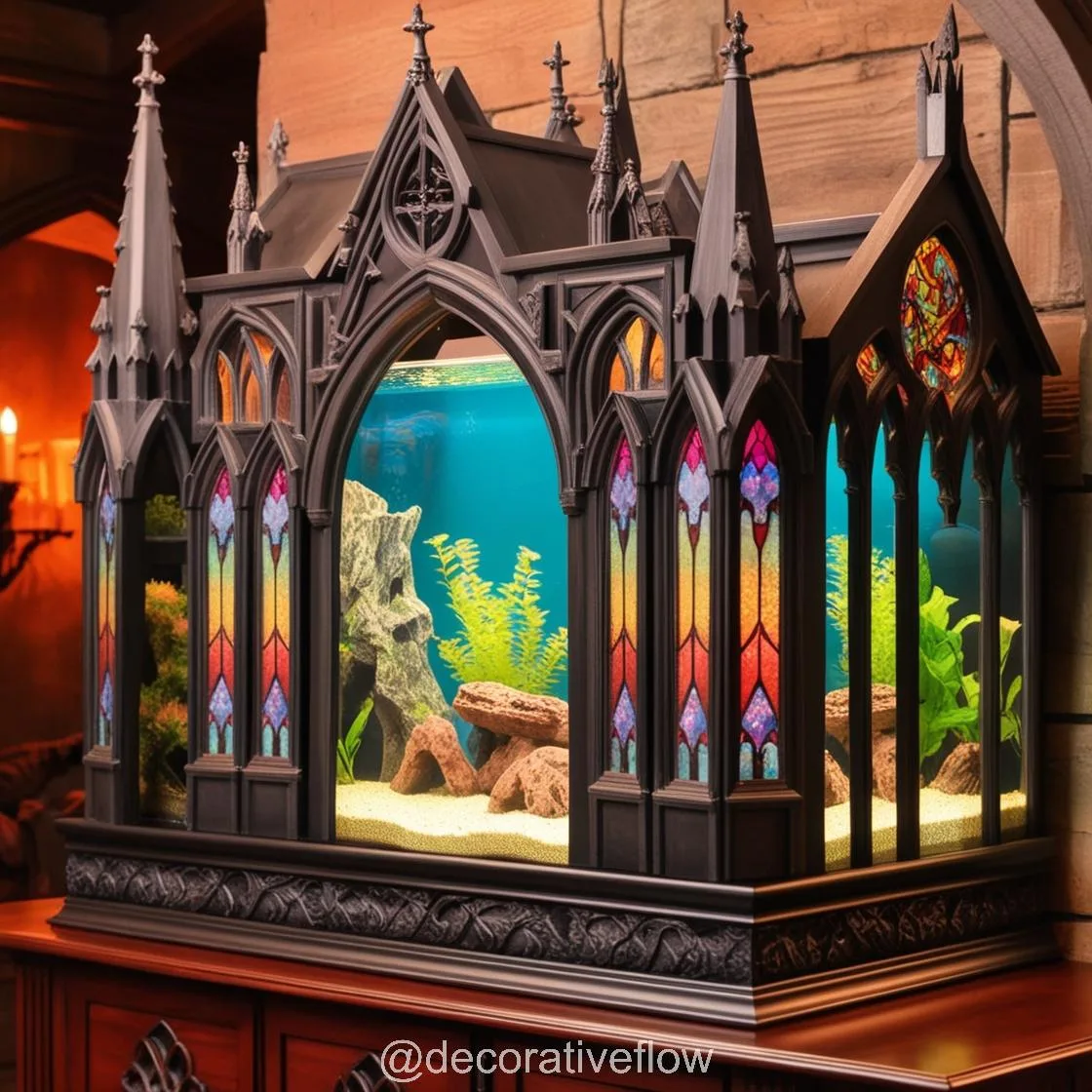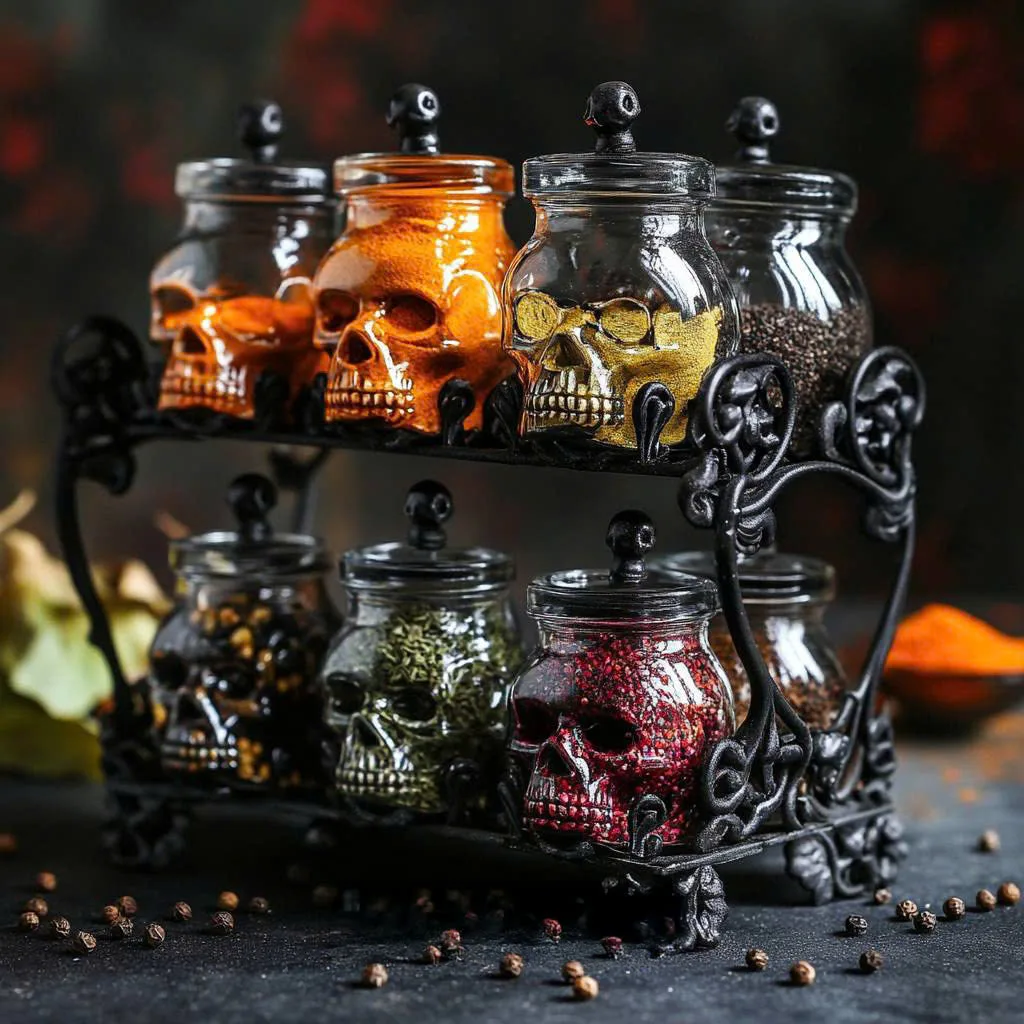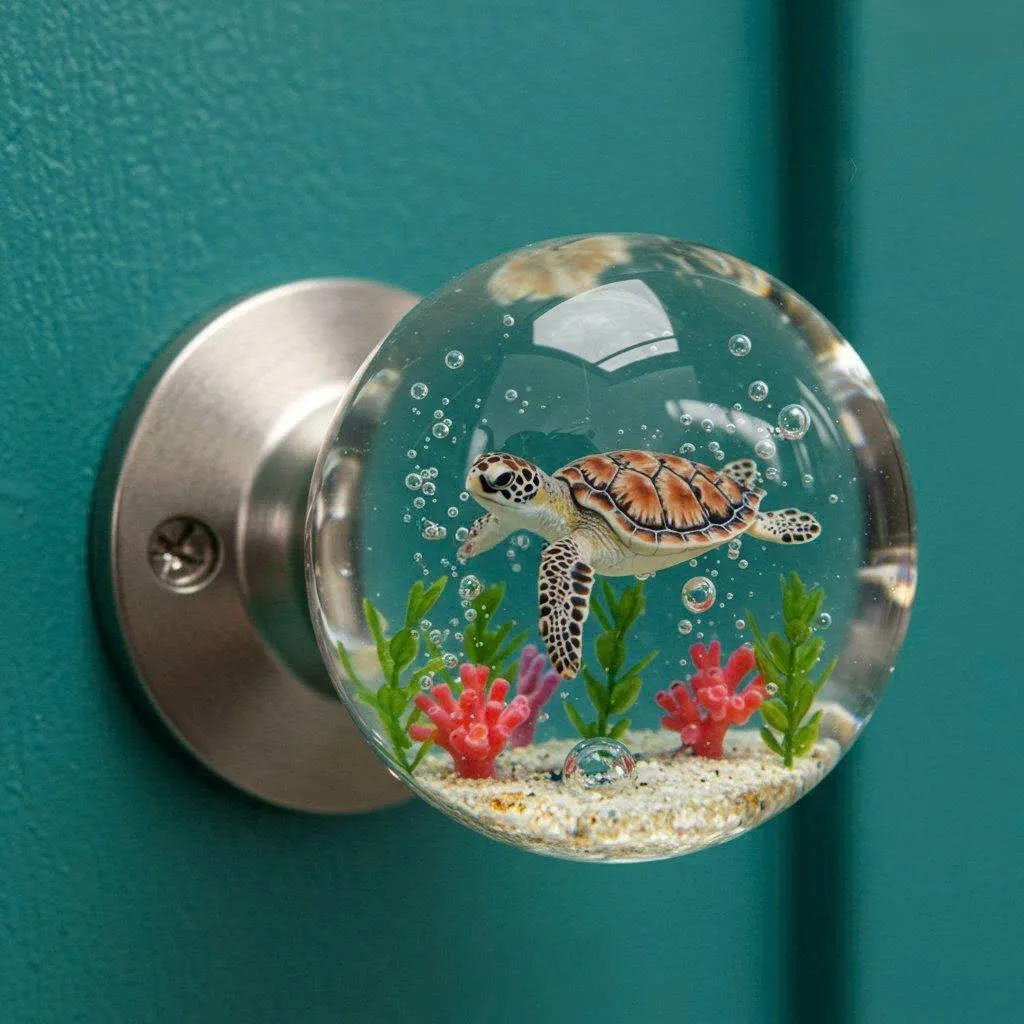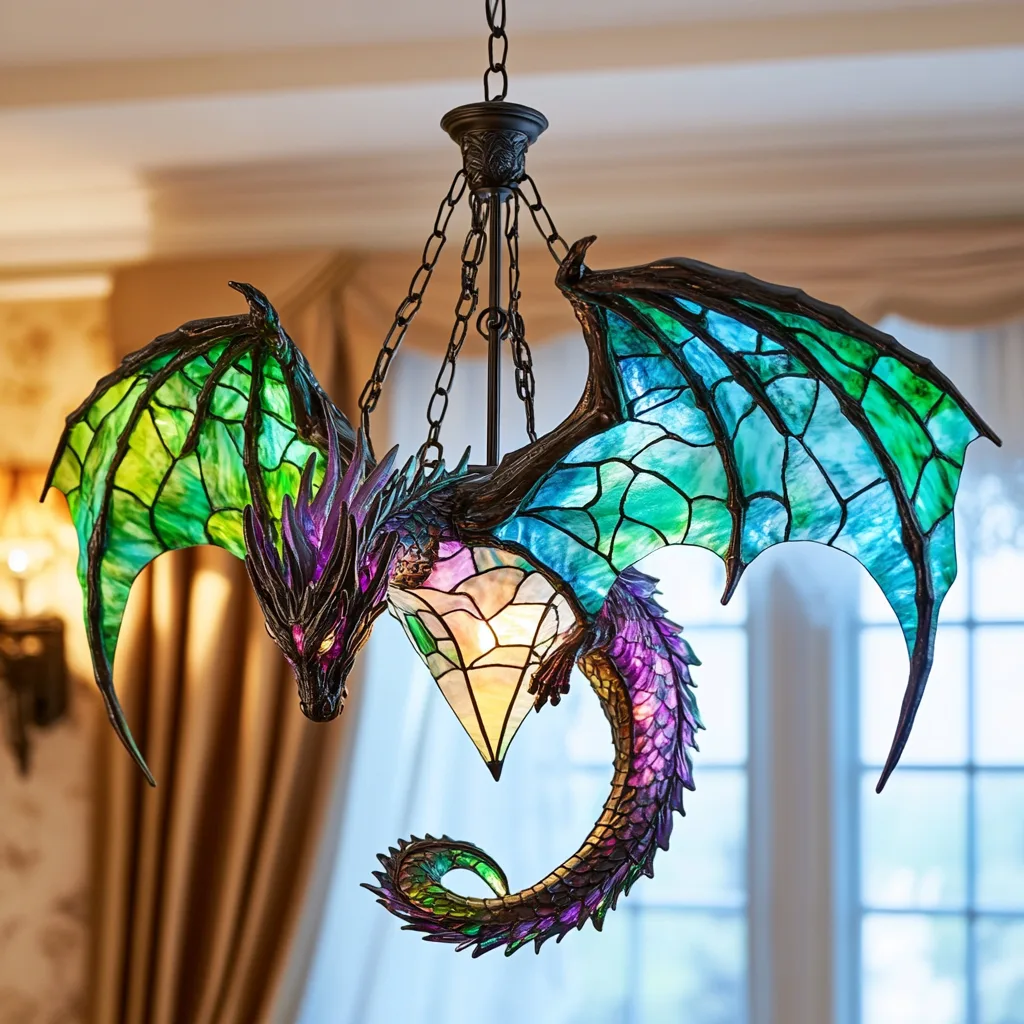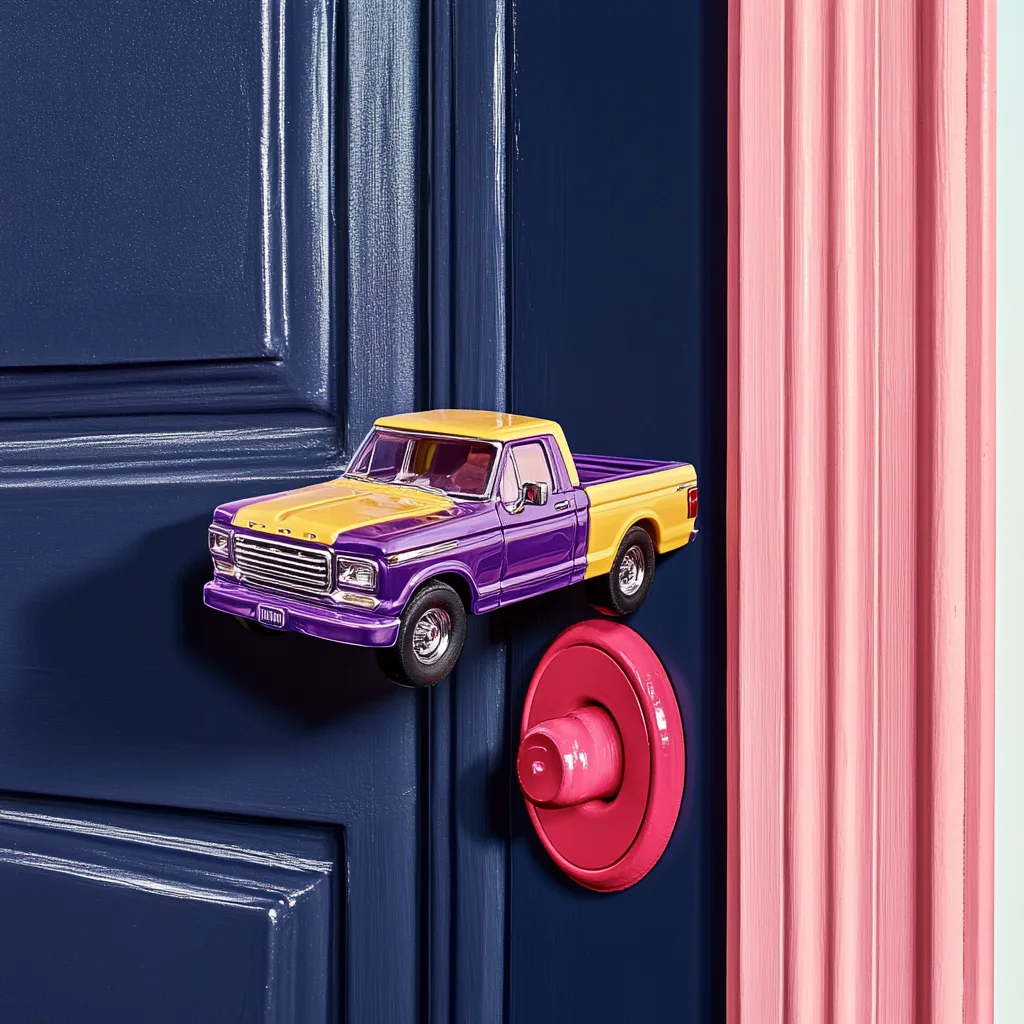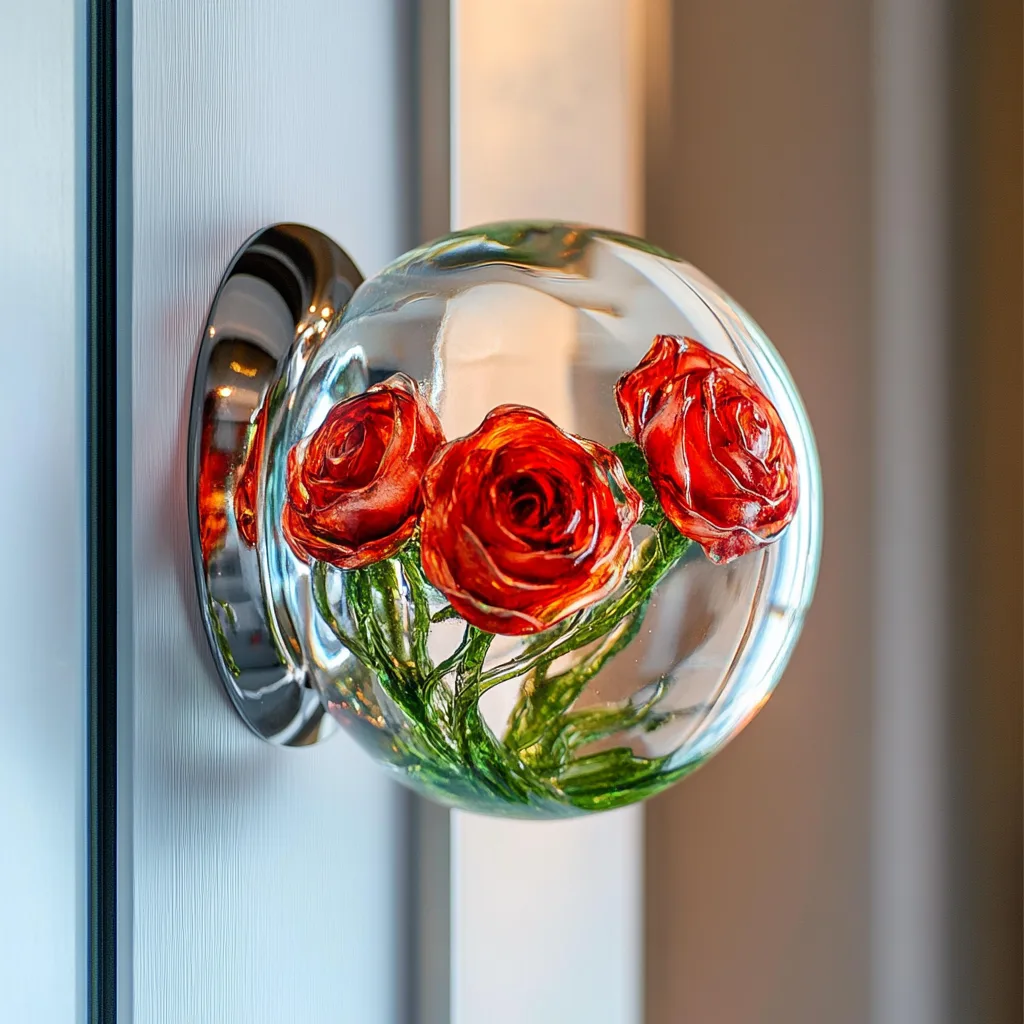Contents
The Allure of Gothic Aesthetics in Aquariums
Aquariums have long been celebrated for their ability to bring a touch of nature into the home, offering a tranquil escape through the vibrant colors and peaceful movements of fish. Yet, as the world of interior design evolves, so too do the ways in which we incorporate nature’s wonders into our spaces. One particularly striking evolution in aquarium design is the rise of Gothic Aquariums—a dark, dramatic, and uniquely captivating way to showcase aquatic life.

The Gothic style, with its roots in medieval architecture and art, evokes a sense of mystery, elegance, and a haunting beauty. Gothic aesthetics typically feature bold contrasts, intricate details, and a penchant for the eerie and otherworldly. When applied to aquariums, this style transforms the simple act of keeping fish into an immersive experience—blurring the lines between nature, art, and fantasy.
This article explores the world of Gothic Aquariums, examining how this style brings an unexpected yet captivating twist to traditional aquarium design. We will explore the origins and influences of Gothic aesthetics, the unique elements that make these aquariums stand out, and how to create your own Gothic aquarium for a space that evokes enchantment, mystery, and beauty.
The Origins and Influence of Gothic Aesthetics
The Roots of Gothic Design: Medieval Influence and Architecture
Gothic design traces its origins to the Middle Ages, emerging in Europe during the 12th century and flourishing through the 16th century. It is most famously represented in the architecture of towering cathedrals, such as Notre-Dame de Paris and the Chartres Cathedral. The defining characteristics of Gothic architecture include pointed arches, ribbed vaults, flying buttresses, and large stained glass windows that let in ethereal light, casting a colorful glow over the space.
In art and culture, the Gothic style conveys a sense of the sublime, with an emphasis on grandeur, dramatic contrasts, and a connection to the spiritual and the mysterious. While the style was initially associated with religious and architectural settings, it later extended to literature, fashion, and visual arts—eventually leading to the modern Gothic subculture.
Gothic design is also known for embracing the darker and more fantastical elements of life. Themes of death, decay, and the supernatural are frequently explored, but always through a lens that reveals beauty in the darkness. It’s this combination of dark elegance and otherworldly allure that makes Gothic Aquariums such a captivating trend.
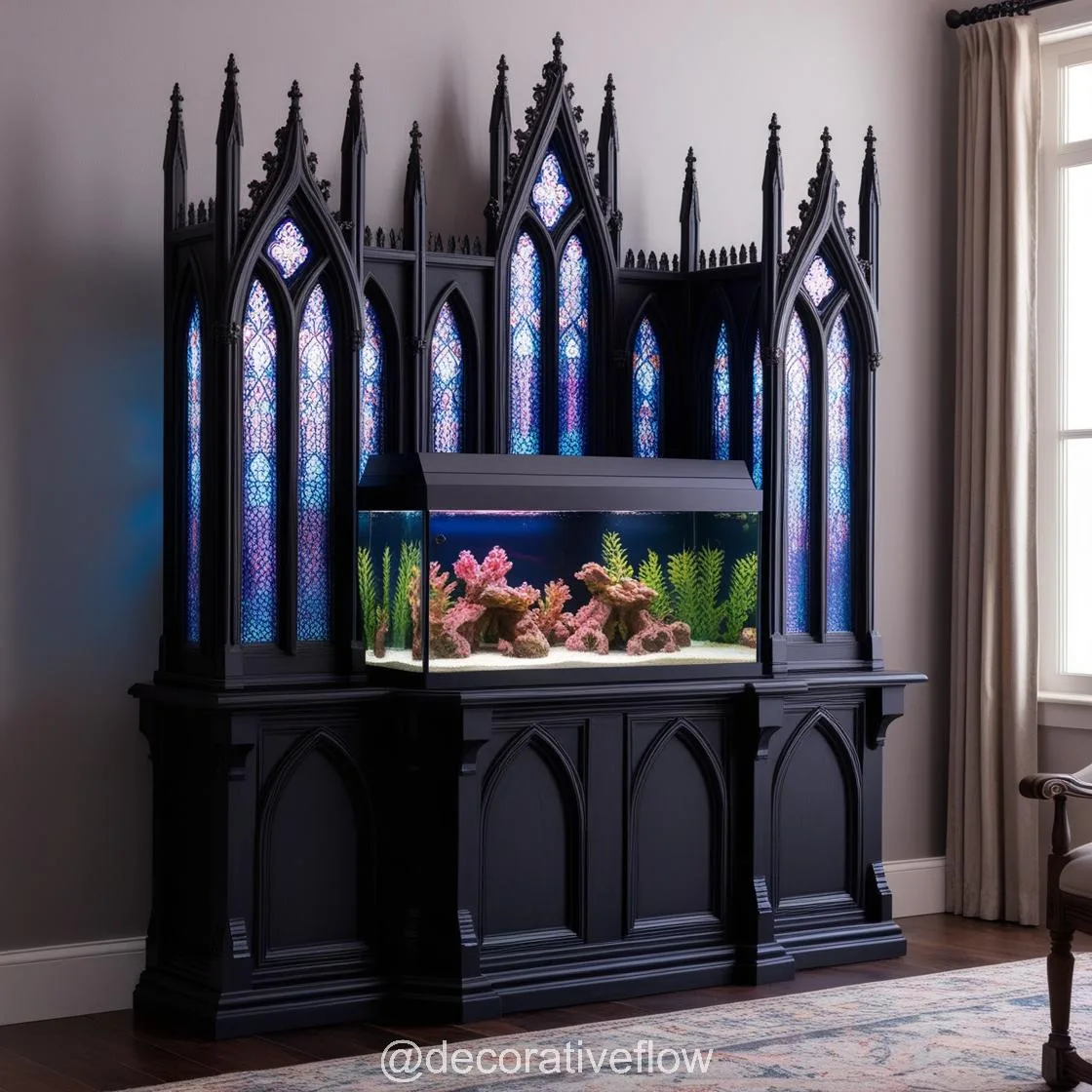
The Evolution of Gothic Aquariums: From Classic to Contemporary
While the origins of Gothic style are firmly rooted in medieval Europe, it has evolved and found new expression in contemporary culture. Modern Gothic design combines traditional motifs with cutting-edge trends, resulting in a look that is simultaneously old-world and avant-garde. This fusion is evident in the design of Gothic Aquariums—which balance intricate details, rich textures, and somber colors with the natural beauty of aquatic life.
The idea of incorporating Gothic elements into aquariums first emerged in the late 20th century as the Gothic subculture gained popularity. As people sought ways to personalize their living spaces, the aquarium became a medium through which they could explore their love for the dark, mystical, and macabre. Gothic Aquariums offer a visual feast of contrasts: dark, brooding landscapes filled with delicate aquatic plants, dramatic lighting, and eerie, almost ethereal decorations.

Key Elements of Gothic Aquarium Design
Dark and Dramatic Themes
At the heart of every Gothic Aquarium is its dark and dramatic atmosphere. Unlike traditional aquariums, which often use light, bright colors to create a sense of peace, Gothic aquariums use darkness as a central element of their design. The tank’s background is often black or deep gray, serving as a canvas for the play of light and shadow. This dark backdrop allows the vibrant colors of the fish, plants, and decorations to stand out in stark contrast, creating an otherworldly effect.
A common feature of Gothic Aquariums is the use of dim, atmospheric lighting—whether it’s through LED strips, spotlights, or even soft candlelight (though real candles should be avoided near water). This lighting highlights the shimmering scales of fish as they move through the dark water, adding to the sense of mystery and enchantment. Sometimes, colored lights in hues of deep purple, blue, or red are used to enhance the dramatic effect, casting an eerie glow over the entire aquarium.

Intricate Gothic Decorations
One of the key elements that distinguish Gothic Aquariums from other designs is the incorporation of Gothic-inspired decorations. This can include miniature castles, skulls, cobwebs, gargoyles, and wrought iron elements—all of which contribute to the dark, enchanted ambiance. The architecture of the decorations often echoes the pointed arches and intricate details of Gothic cathedrals, creating a sense of fantasy and grandeur within the tank.
In addition to traditional Gothic décor, modern twists are often incorporated into these aquariums. For instance, LED-lit skulls or haunting underwater scenes can add a contemporary edge to the tank’s design, while still maintaining the overall Gothic vibe. This blend of old and new keeps the aquarium both timeless and innovative.
The Use of Natural Elements: Rocks, Driftwood, and Plants
While Gothic Aquariums may rely heavily on dark aesthetics, they still emphasize the importance of natural elements. The use of dark rocks, twisted driftwood, and submerged plants adds depth and texture to the tank, grounding the otherworldly theme in the natural world. Black rocks or dark-colored substrates can further enhance the Gothic aesthetic, giving the tank an ancient, almost forgotten feel.
Plants such as Java fern, mosses, and dark-colored aquatic plants are frequently used in Gothic Aquariums. These plants thrive in low-light conditions, which not only suits the dim lighting typically used in these aquariums but also contributes to the shadowy ambiance. The plants’ dark green tones and twisted shapes mirror the Gothic elements of decay and mystery, enhancing the overall aesthetic.
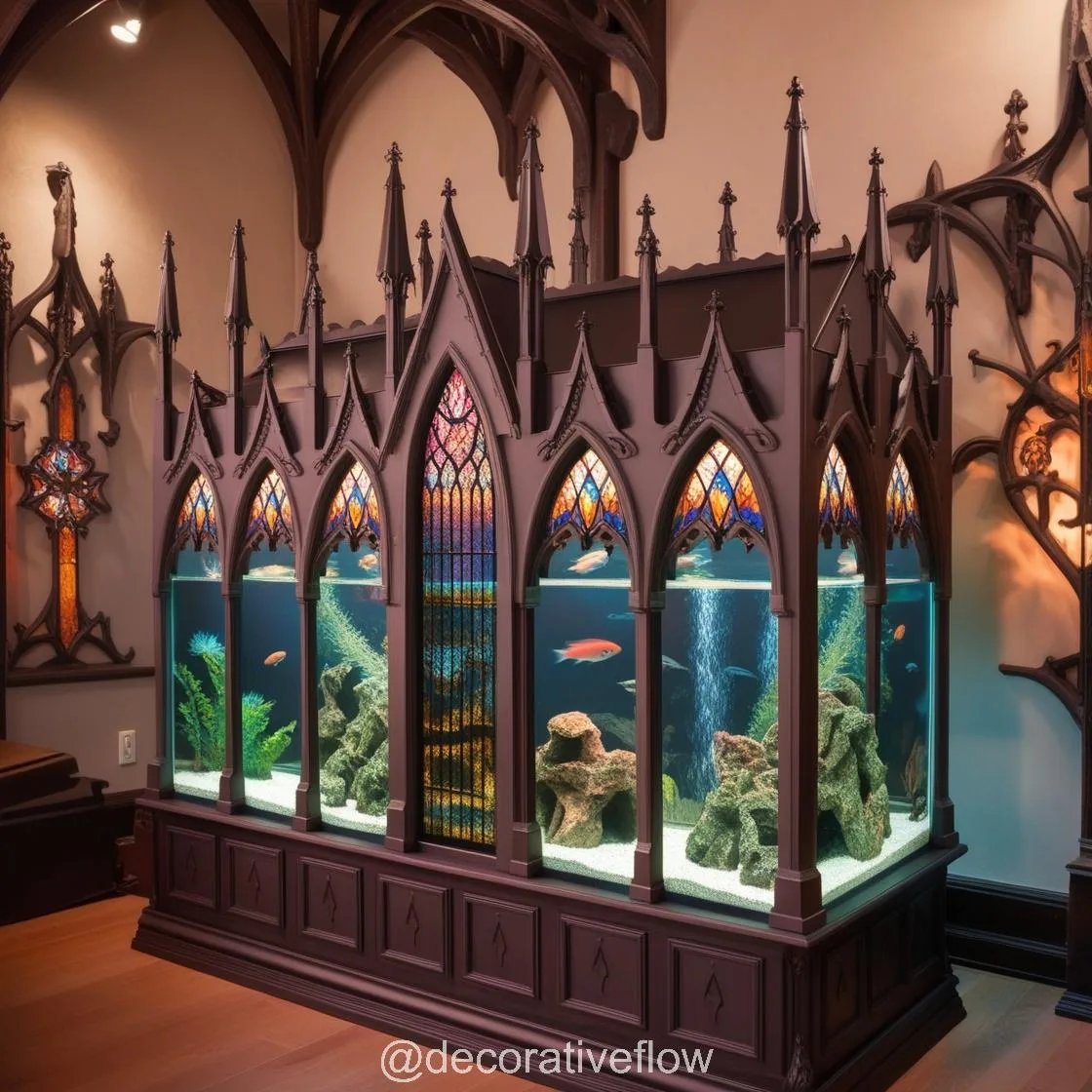
Fish Selection for a Gothic Aquarium
Fish play a crucial role in the design of Gothic Aquariums, as they bring movement and life to the dark environment. While many types of fish can be used, dark-colored species are often preferred. Fish with black, dark purple, or deep red hues complement the aquarium’s dark atmosphere and contribute to the haunting beauty of the design.
Some popular choices for Gothic Aquariums include:
- Black Molly Fish: Their sleek, dark bodies and peaceful nature make them a perfect fit for the Gothic theme.
- Betta Fish: With their flowing fins and wide range of vibrant colors, including deep purples and reds, Betta fish add elegance and mystique.
- Neon Tetras: Their glowing blue or red accents against a dark tank background create a contrast that enhances the Gothic aesthetic.
- Angelfish: Known for their graceful, flowing movements, Angelfish add a sense of otherworldly beauty to the aquarium.
The combination of these fish with the dim, atmospheric lighting creates a mesmerizing effect as they glide through the tank, adding a layer of dynamic beauty to the overall design.
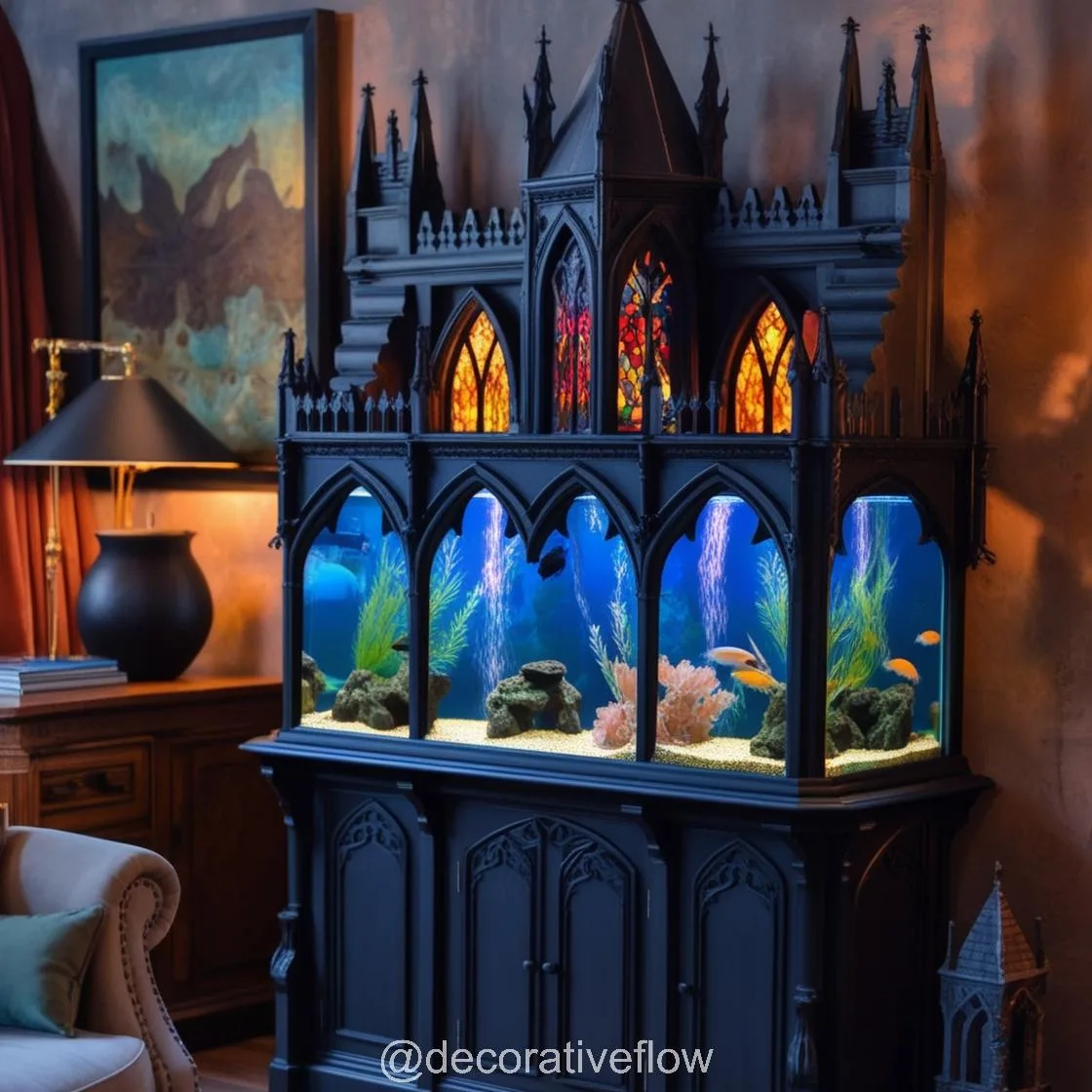
Creating Your Own Gothic Aquarium
Choosing the Right Tank
To create a truly immersive Gothic Aquarium, you’ll need to choose the right tank. A larger tank allows for more creativity and space for intricate decorations, but even a small aquarium can be transformed into a Gothic masterpiece. Opt for a rectangular or cylindrical tank with clean lines, as this provides a sleek, minimalist backdrop for the Gothic elements. Dark-colored tanks or those with black, frosted, or frosted glass are ideal for creating the right atmosphere.
Planning the Layout
Begin by planning the layout of the aquarium. Place the larger Gothic elements, such as castles, skulls, and driftwood, near the back of the tank to create depth. Position smaller items, such as moss or smaller plants, near the front. Play with the height of the decorations to create visual interest and maintain the Gothic vibe. Make sure to leave ample swimming space for the fish while incorporating the dramatic elements.
Lighting and Water Quality
Investing in the right lighting system is key to achieving the Gothic ambiance. LED lighting with adjustable colors is ideal for setting the mood, while dimming features allow you to adjust the atmosphere according to the time of day. Ensure that the tank has appropriate filtration systems to maintain water quality for both your fish and plants, as murky water can disrupt the overall aesthetic.
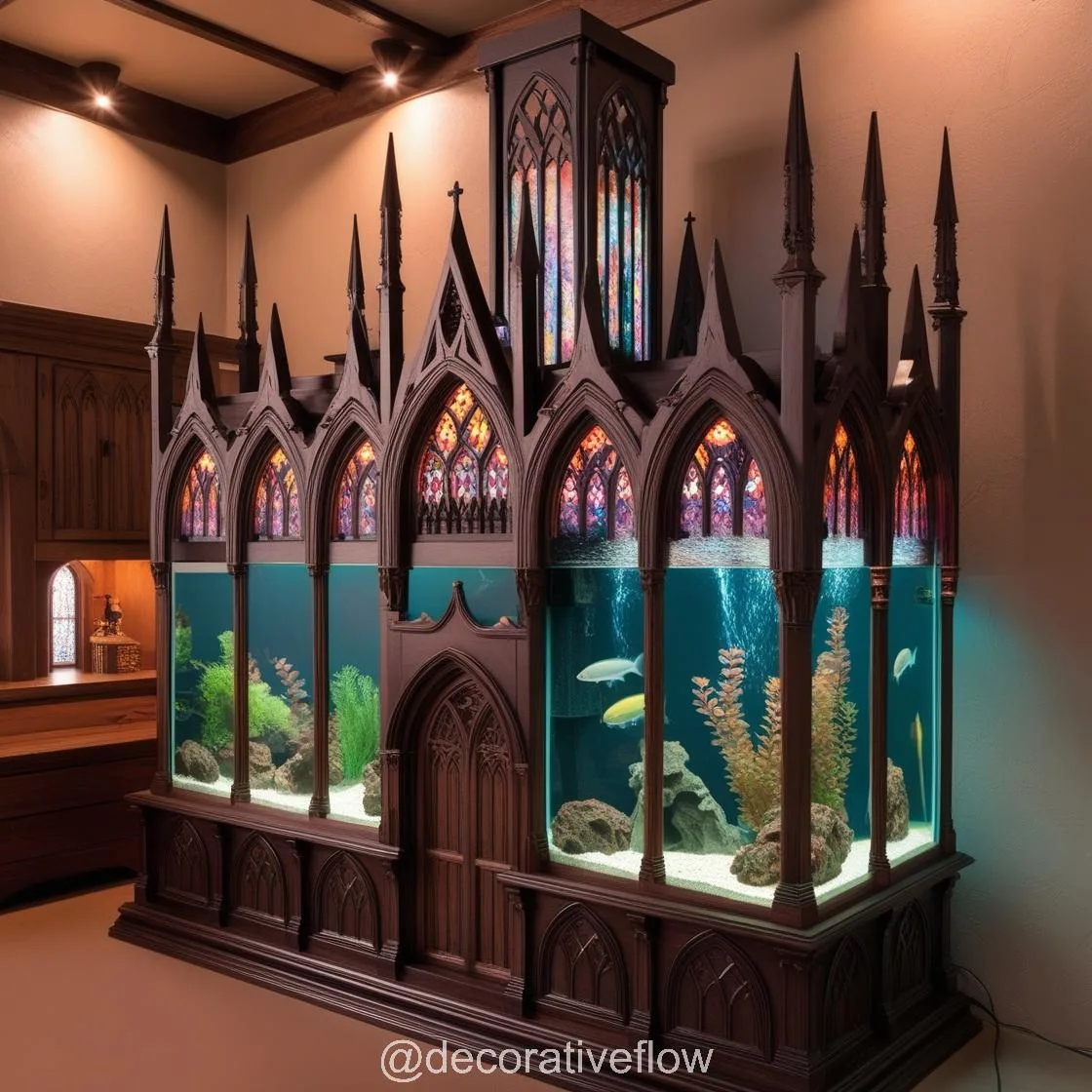
Ongoing Maintenance
Maintaining a Gothic Aquarium requires regular attention to both water quality and decor. The dark colors of the tank’s decorations and substrates may show algae growth or dust more easily, so regular cleaning is essential. Check the water parameters—such as pH, temperature, and salinity—and perform regular water changes to keep the aquarium healthy and vibrant.
Conclusion: Embrace the Mystery and Elegance of Gothic Aquariums
Gothic Aquariums offer a captivating fusion of natural beauty and dark elegance, transforming an aquarium into more than just a space for fish. By drawing inspiration from the mystique of Gothic art, architecture, and culture, these aquariums create an enchanting atmosphere that invites you to lose yourself in their depths.
Whether you’re drawn to the Gothic style for its mystery, its beauty, or its connection to the supernatural, creating a Gothic aquarium allows you to infuse your living space with a unique, otherworldly charm. By choosing the right tank, fish, plants, and decorations, you can craft a dark and enchanting underwater world that will be a true centerpiece in any room.
